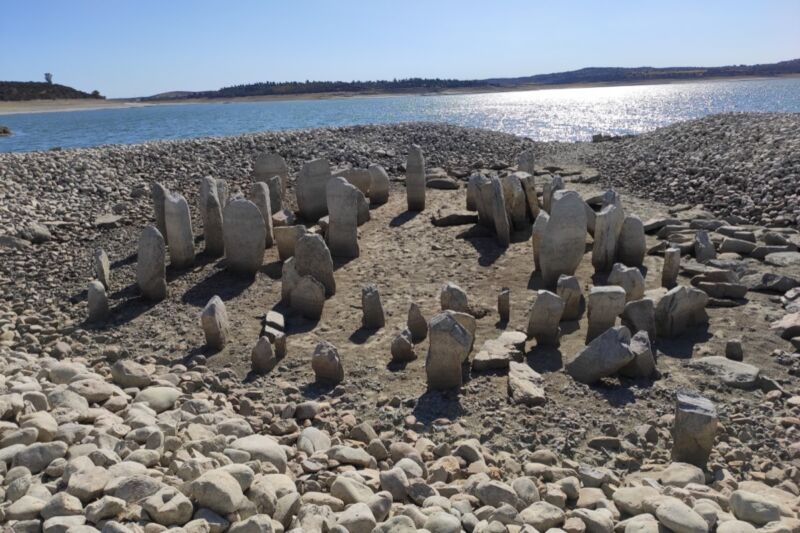“Spanish Stonehenge” emerges from watery grave for second time in last 3 years

Enlarge / The Dolmen of Guadalperal completely visible in July 2019 due to a low water level in the Valdecanas reservoir. (credit: Pleonr /CC BY-SA 4.0)
Last week we told you about the flurry of recent coverage resurfacing 2018 news stories about the re-emergence of so-called "hunger stones" due to extreme drought conditions in Europe. We also noted that Europe is once again in the midst of a historically severe drought. Now an ancient site known as the "Spanish Stonehenge"-submerged underwater by a reservoir for decades-has been fully exposed for the second time since 2019 due to low water levels in the reservoir.
The site is also known as the Dolmen of Guadalperal, a circular grouping of 150 large vertical granite stones (called orthostats) dating back to between 2000 and 3000 BCE. However, Roman artifacts recovered at the site-a coin, ceramic fragments, and a grinding stone-suggest it might have been used even earlier. A team led by German archaeologist Hugo Obermaier discovered the monument in 1926 near a town called Peraleda de la Mata.
Among the recovered artifacts were 11 axes, flint knives, ceramics, and a copper punch. A nearby settlement likely housed the people who built the monument, given the presence of houses, charcoal and ash stains, pottery, and stones to hone axes. Obermaier restored some of the granite stones to their rightful places and made reproductions of the engravings, which were published in 1960.